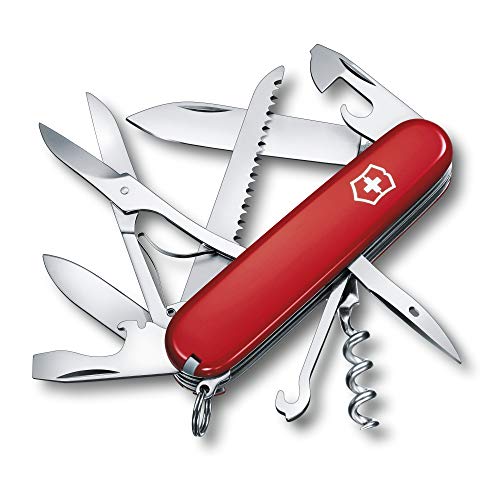Evolution of the Swiss Knife: A Marvel of Ingenious Design
The iconic Swiss knife, popularly known for its multi-functionality and compact design, has a long and fascinating history that dates back several centuries. Created as a versatile tool for the Swiss Army, it has evolved over time into a worldwide symbol of innovation and quality. Let’s dive into the history of the Swiss knife and explore its remarkable journey.
The Birth of a Versatile Tool: Origins of the Swiss Knife
The origins of the Swiss knife can be traced back to the early 19th century when soldiers in the Swiss Army carried individual tools separately. Seeking a more efficient solution, the Swiss government commissioned a new folding pocket knife design, known as the Modell 1890, to meet the needs of their soldiers. This marked the birth of the Swiss Army Knife.
The original Swiss Army Knife featured a wooden handle, metal implements, and a folding blade. It included essential tools such as a screwdriver, reamer, and can opener. The knife also featured a unique mechanism that allowed the user to slide the blade outwards and lock it firmly in place, ensuring safety during use.
Innovation and Expansion: The Victorinox Era
In 1897, Swiss cutler Karl Elsener revolutionized the Swiss Army Knife by inventing a major improvement – the spring mechanism. This innovation enabled the knife to include even more tools and further increased its versatility. Karl Elsener’s cutlery company, known as Victorinox, became the exclusive supplier of Swiss Army Knives to the Swiss Army.
During World War II, the demand for Swiss Army Knives grew exponentially as they became popular tools among soldiers and adventurers worldwide. Recognizing the potential of their product beyond military use, Victorinox expanded their market reach and started producing Swiss Army Knives for civilians as well.
Competition and Collaboration: Wenger Joins the Fray
In 1893, another renowned Swiss cutler, Paul Boéchat & Cie, introduced their version of the Swiss Army Knife under the brand name Wenger. Initially, Wenger produced their knives independently, but in 1908, they entered into a collaboration agreement with Victorinox. This cooperation allowed both companies to focus on their respective strengths and establish a duopoly in the Swiss Army Knife market.
Wenger brought their unique touch to the Swiss Army Knife design, introducing new features and variations. Their knives had a distinct logo and several innovative tools like fish scalers, cigar cutters, and nail clippers. With this collaboration, the Swiss Army Knife continued to evolve, meeting the diverse needs of consumers around the world.
A Journey of Excellence: The Swiss Knife Reaches New Heights
Over the years, the Swiss Army Knife has continued to evolve and adapt to modern needs. Today, both Victorinox and Wenger produce a wide range of Swiss Army Knives, each offering unique features and designs. The knives are made with precision and high-quality craftsmanship, ensuring their durability and reliability.
The Swiss Army Knife has become more than just a practical tool – it has transformed into a symbol of Swiss ingenuity and quality. The iconic design and functional versatility have made it a popular choice for outdoor enthusiasts, military personnel, and everyday carry enthusiasts around the world.
A Timeless Icon: The Swiss Knife’s Enduring Legacy
Throughout its history, the Swiss Army Knife has demonstrated its remarkable versatility and practicality in various situations. Its adaptable design and high-quality construction have made it an essential tool for countless individuals worldwide.
The Swiss Army Knife’s enduring legacy can be attributed to its continuous evolution, innovative design, and commitment to excellence. Whether you need to open a can, cut a piece of rope, or tighten a screw, the Swiss Army Knife remains the epitome of reliability and functionality.
Today, the Swiss Army Knife continues to hold a special place in the hearts of many, symbolizing Swiss precision, craftsmanship, and the spirit of adventure.






